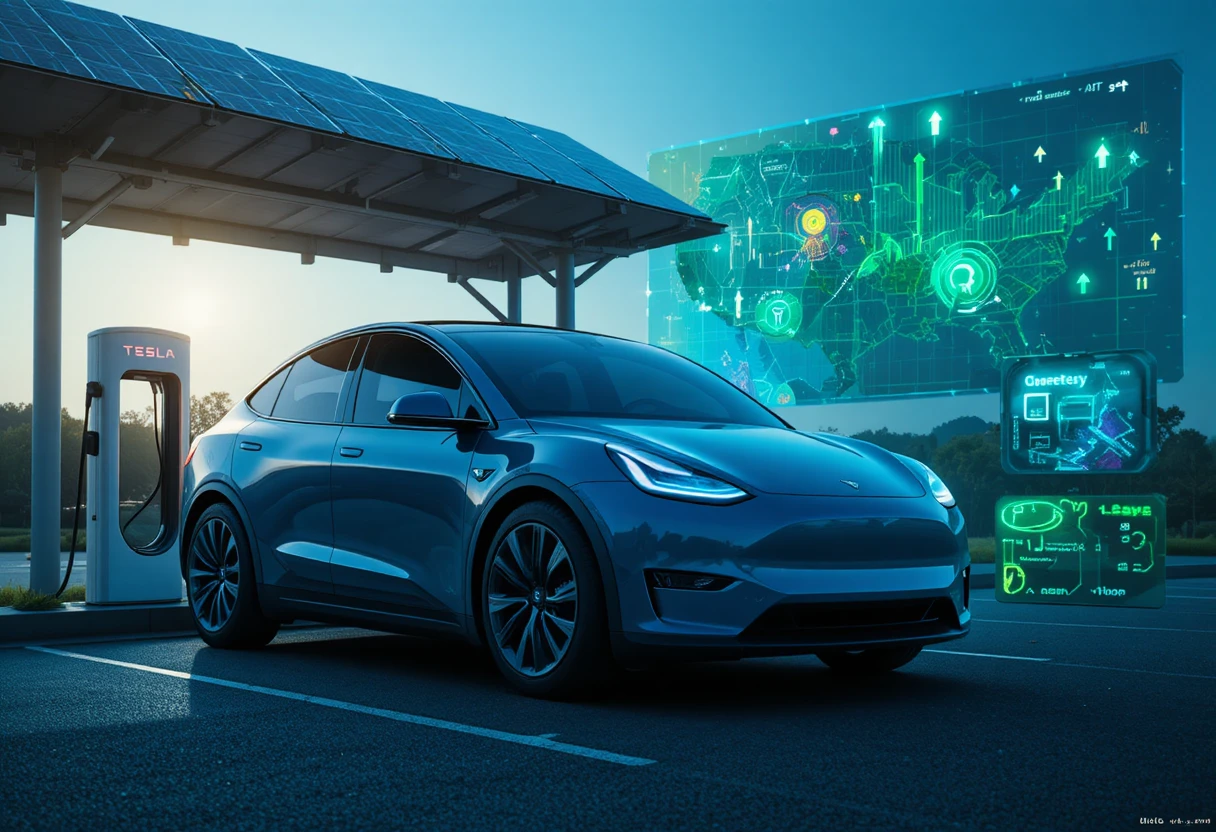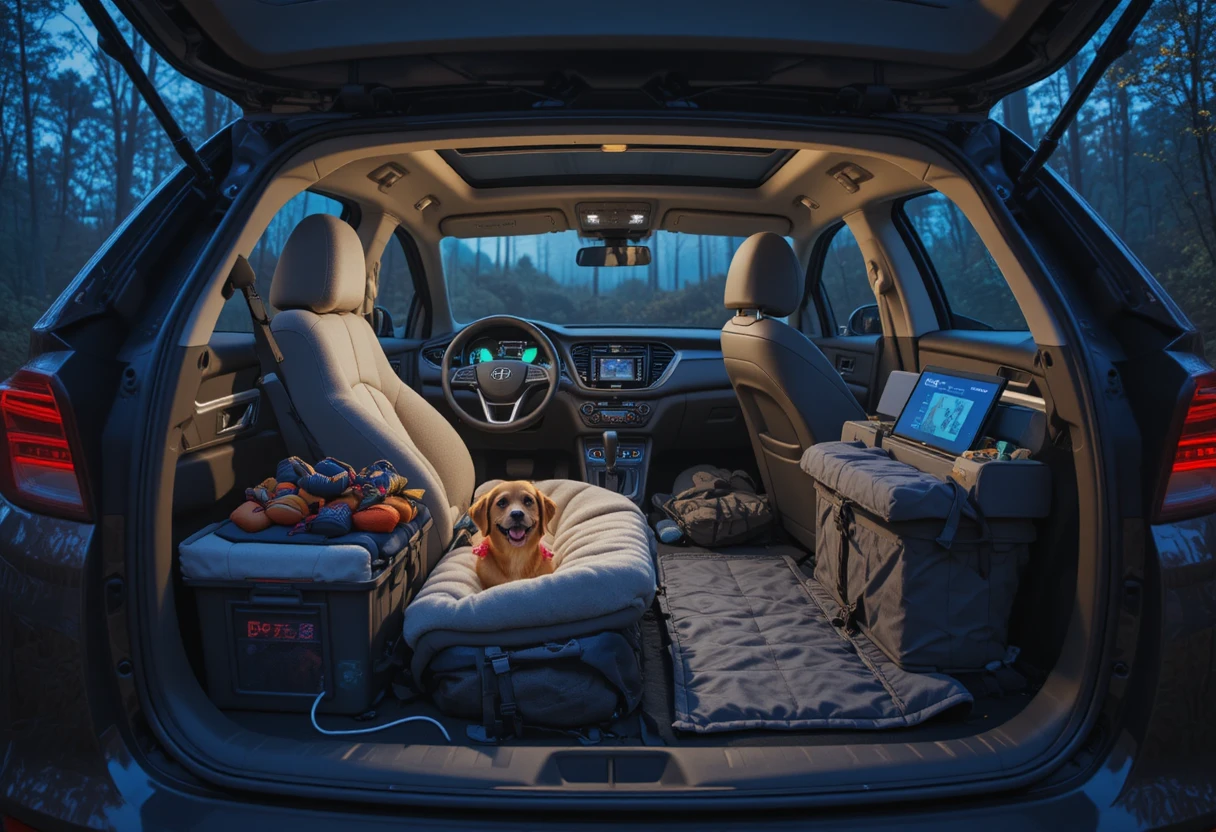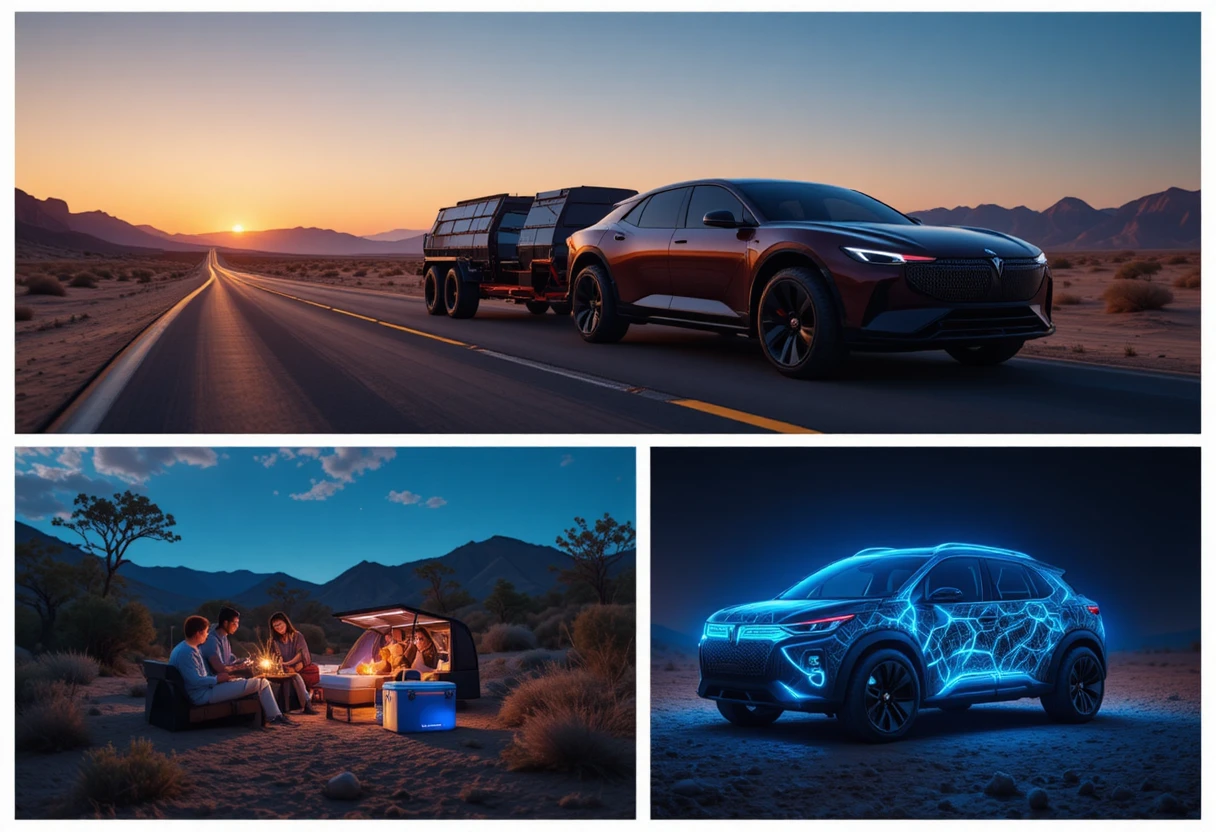Electric Vehicle Gadgets
In the electrified dawn of 2025, electric vehicles (EVs) aren’t just modes of transport—they’re rolling ecosystems demanding smart, sustainable enhancements. With global EV sales surging 25% to 17.8 million units in 2024 and projected to climb to 21.3 million in 2025 (capturing a 24% market share), the accessory market has exploded to $15.2 billion, up 32% year-over-year. From Level 2 home chargers that sip energy at off-peak rates to AI-powered tire inflators that predict punctures, these gadgets transform range anxiety into range mastery. As Q3 2025 U.S. sales hit a record 438,487 units—up 29.6% year-over-year—EV owners are prioritizing essentials that boost efficiency, safety, and joy.
This 3,000-word guide distills the must-haves: charging cornerstones, interior innovators, exterior enhancers, tech triumphs, maintenance musts, safety sentinels, sustainability boosters, and future frontiers—arming you to electrify every mile.
The EV Boom: Why Gadgets Matter Now
2025 Market Snapshot
The EV landscape in 2025 is a tale of acceleration. China leads with over 11 million sales in 2024, while Europe’s share stabilizes at 25% amid stricter CO2 rules. In the U.S., Q1 sales topped 300,000 units (up 11.4%), fueled by models like the Chevy Equinox EV and Hyundai Ioniq 5. Globally, 785 models vie for buyers, with battery demand exceeding 1 TWh.
Gadgets bridge gaps: 80-90% of charging happens at home, yet public infrastructure lags, making portable adapters vital. Accessories like V2L adapters (under $200) turn EVs into power banks, powering campsites or outages. As hybrids gain traction (easing range fears), pure EV owners seek gadgets that amplify zero-emission perks—efficiency, silence, torque.
Adoption Drivers
Affordability reigns: Average EV prices dipped to $57,400, with incentives like the IRA slashing costs further. Gadgets democratize this—frunk organizers ($20) maximize storage in models like the Tesla Model Y, while solar panels trickle-charge batteries off-grid. Sustainability sells: Eco-air fresheners and reusable solar coolers align with EV ethos, reducing waste.

Charging Cornerstones: Power Without the Plug Hassle
Home and Portable Chargers
Level 2 chargers are non-negotiable: At $350–$1,000, they deliver 7–19 miles of range per hour, versus Level 1’s snail-paced 3–5. The Emporia EV Charger (Energy Star-certified) offers Wi-Fi scheduling and extreme-weather resilience, saving 23% on bills via off-peak rates. For apartments, portable Mode 2 cables ($150–$300) plug into standard outlets, adding 10–20 miles overnight.
Portable power stations like the EcoFlow Delta 2 (1kWh, $999) serve dual duty: Jump-start your EV or run appliances during blackouts, providing 80% of daily charging needs. V2L adapters for Hyundai/Kia/Genesis ($200) unlock 1.9kW outlets, powering fridges or tools—ideal for tailgates.
Adapters and Cables
NACS (Tesla’s standard) dominates, but CCS1/J1772 adapters ($50–$150) unlock 80% more stations. Lectron’s CCS1-to-NACS ($130, 500A/500V) fast-charges non-Teslas at Superchargers, adding 100 miles in 15 minutes. Extension cables (25–50 ft, heavy-duty rubber) prevent tangles, but avoid cheap ones—overheating risks void warranties.
Organizers like the Seven Sparta Holder ($40) mount cables neatly, with chassis brackets for wall or trunk storage. For 2025’s Juniper Model Y, Spigen’s door docks ($25) secure J1772 adapters, preventing rattles.
Interior Innovators: Comfort in the Cabin
Mats, Organizers, and Covers
EVs’ quiet cabins amplify road noise, so all-weather mats like 3D Maxpider ($150–$250) trap mud without curling, fitting Tesla/Rivian/Hummer precisely. Frunk bins ($30) exploit dead space, holding groceries or tools in the Model 3’s 3 cubic feet.
Seat covers (heated/massaging, $100–$300) add luxury; Covercraft’s Gen 3 ($200) uses breathable neoprene for long hauls, with airbag compatibility. Pet liners ($80) protect from furry passengers, with waterproof barriers for the Bolt EV.
Tech Touches
Wireless chargers like EVBASE’s MagSafe mount ($50) for Model Y snaps phones into view, delivering 15W while navigating. Steering wheel trays ($20) turn stops into workspaces, clipping securely for laptops or snacks. Air purifiers (HEPA, $100) combat cabin odors, integrating with HVAC for cabin CO2 monitoring.
Eco-fresheners ($15) use essential oils, aligning with EV’s green vibe—no VOCs, just lavender calm.

Exterior Enhancers: Style Meets Substance
Wraps, Spoilers, and Emblems
Vinyl wraps from 10KWRAPS ($1,000–$3,000) shield paint while customizing—matte black for Cybertruck aggression or chrome for Rivian subtlety. Carbon fiber spoilers like Pimp My EV’s molded wing ($500) for Model Y Juniper add downforce, reducing drag by 5% for extra range.
Emblems ($20–$50) personalize: Highland Ludicrous badges for Model 3 nod to performance heritage. LED strips ($30) underbody glow in music-sync modes, turning commutes into light shows.
Protection and Utility
Mud flaps ($40) for Equinox EV fend off debris, preserving underbody batteries. Roof racks like Thule’s EV-compatible ($300) carry kayaks without aero penalties.
Tech Triumphs: Connectivity and Intelligence
Dash Cams and Monitors
Dash cams like Thinkware U3000 ($400) record 4K front/rear with AI parking mode, alerting via app to bumps. Energy monitors (e.g., Emporia’s tracker, $100) log kWh usage, optimizing for 20% savings.
OBD-II scanners ($50) diagnose faults, with apps like Torque Pro decoding error codes for DIY fixes.
Apps and Integrations
ABRP and PlugShare apps plot routes with real-time station availability, essential for cross-country treks. Tesla’s ecosystem syncs with HomeLink for garage openers, while FordPass unlocks preconditioning remotely.
Maintenance Musts: Keep It Charged and Rolling
Tires and Inflators
EV-specific tires like Michelin’s e.Primacy ($200/set) cut rolling resistance by 7%, adding 20 miles per charge. Portable inflators like Viair’s 88P ($80) auto-stop at PSI, with LED lights for night flats.
Cleaning and Protection
Ceramic coatings ($500) repel dirt, easing washes; foam cannons ($40) apply soaps contactless, preserving paint. Emergency kits include tire sealants and tow straps tailored for heavier EVs.
Safety Sentinels: Drive Defended
Backup Aids and Alerts
Backup cameras like Garmin’s BC 50 ($200) add 180° views, crucial for low trailers. Blind-spot monitors ($150) retrofit via OBD, vibrating seats on alerts.
Roadside kits ($50) pack cones, gloves, and EV-specific jumpers—no gas cans needed.
Weather Warriors
Heated blankets ($40) plug into 12V, warming cabins in -20°F without draining batteries. Sunshades ($30) for glass roofs block UV, preserving interiors.
Sustainability Boosters: Green on the Go
Solar Solutions
Portable panels like DOKIO 220W ($250) trickle 15 miles daily from sunlight, perfect for RVs. Solar coolers ($100) keep snacks chilled sans outlets, using foldable arrays.
Eco-Enhancers
Reusable bags and bamboo liners minimize waste; apps track carbon savings, gamifying green miles.

Future Frontiers: 2030 Gadgets on the Horizon
By 2030, EVs claim 44.6% share, with gadgets like neural dash cams predicting hazards via EEG and bidirectional roads beaming power wirelessly. Solid-state batteries enable swappable modules; AR windshields overlay routes. Accessories evolve: Self-healing wraps repair scratches autonomously, AI companions converse for fatigue detection.
Challenges persist—tariffs on aluminum hike costs—but innovations like 6G telematics promise seamless updates. As stock hits 380 million for net-zero goals, gadgets will be the unsung heroes, turning EVs from vehicles to versatile vaults of energy and entertainment.
Conclusion: Gear Up for the Gridless Ride
In 2025’s EV surge, gadgets aren’t luxuries—they’re lifelines. From Lectron adapters unlocking chargers to 3D mats guarding floors, these essentials amplify the silent thrill of electric miles. With sales doubling by 2030, invest wisely: Prioritize compatibility (NACS-ready), sustainability (solar-integrated), and smarts (AI-monitored). Your EV isn’t just green—it’s a gadget playground. Plug in, personalize, and propel toward a charged tomorrow.